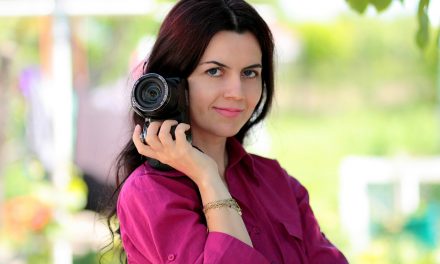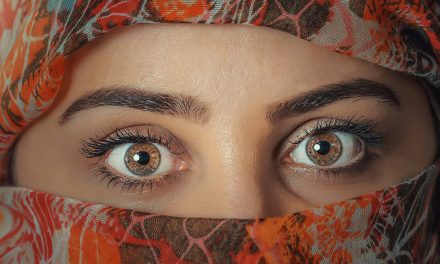
photo credit: Allef Vinicius
Most photographers seem to prefer natural lighting, and it’s easy to see why.
Generally speaking, natural lighting is superior to anything that’s found in a studio or recreated. Even the lighting found during dramatic storms, or dismal afternoons still has a feeling of authenticity to it.
Then there’s the fact that when we’re outdoors, we generally feel at our best. This feeling is something that comes through in your subjects when capturing portraits, resulting in genuine images with an emotion that would be difficult to bring out if you were indoors.
But despite its beauty, being able to work with natural lighting, in all of its different forms is essential for getting the most from it. This is especially the case when creating portraits, where light –and its direction, must be observed for best results.
Learning to make the most of the natural lighting is key to capturing amazing portraits. With this in mind, here’s a look at a few ways that you can get the most out of natural light.
Be Aware of the Direction of Light
Being aware of the direction of light is key to capturing some amazing shots –especially if you’re working during full sun or golden hour –or any time that the direction of light will dictate the direction that you –and your subjects should face.

photo credit: Blake Barlow
Here’s a quick look at how different angles of light can impact your portraits:
• Backlighting
Backlighting, especially when the sun’s low in the sky, can result in some beautiful images. This type of lighting can sometimes result in rim lighting –that soft, golden light around the edges of your subject’s hair or clothes. You’ll also want to use backlighting if you’re hoping to capture silhouettes. Have your subject partially obscure the light, then use spot metering to focus on a bright part of the scene before taking your image for a silhouette effect.
• Front Lighting
Front lighting can help to eliminate shadows. But keep in mind that this lighting can also cause your subject to appear flat. Also, be forewarned: if it’s a sunny day, having your subjects face the sun can result in squinting!
• Side Lighting
Finally, side lighting is often the most ideal lighting for portraits. Shooting with the sun at your side can result in gentle shadows, highlights and lowlights, giving your portraits more depth and interest.
Find Quality Light
First things first, not all lighting is created equal. Natural light can be beautiful, breathtaking, and spectacular. It can also be harsh, dismal, unpredictable, or otherwise challenging to work with.
Still, the good news is that there are great opportunities for to be had –as long as you’re prepared to work with –not against, the light. Use the available light to inspire your compositions, and look to match the mood to the portrait.
With this in mind, here’s a look at some tips for creating exciting portraits –in any light.
• Golden Hour
Shooting during golden hour, that time of day just after sunrise and again just before sunset, can reward you with some amazing light –and excellent portraits. Ideally, you’ll want to start shooting before golden hour to capture that soft, gentle glow that’s found before the light becomes more vibrant as the sun starts to set. The lighting that’s found during the start of golden hour is also easier to work with as well.
• Overcast Conditions
Shooting on a bright, overcast day can actually be better than shooting on a day with full sun. This is because the sky will be acting like a large softbox, diffusing the light naturally for you, resulting in a soft light that is much easier to work with, and more flattering on your subjects as well.
• Full Sun
In most cases you will want to avoid using full sun for portraits as this can lead to harsh shadows and of course, squinting. However, if you’re brave enough to work during full sun, you can still capture some amazing portraits, and ones with a unique, bold look.
One idea is to create your own lighting conditions. Look to find some shade –under a tree, for example, or at the edge of a forest. Depending on the time of day, and direction of light, you may be able to find a shady spot alongside a building. Another idea is using a flash during full sun. Positioning your subject with the sun at their side, and using a fill flash is a great way to eliminate any dark shadows on their face.

photo by: Zulmaury Saavedra
Consider Using Shadows
It’s true –harsh shadows splashed across your subject’s faces can ruin your portraits. But when used intentionally, shadows can result in some exciting images. Shadows can help add depth and contrast to your images. They can help to create a dark and brooding atmosphere, adding a sense of drama or mystery to your images. Just make sure your composition matches the mood. In most cases, you’ll want to avoid having your subjects smile broadly at the camera. Instead, look to create moody, elusive, or dark images –or ones that feature your subjects thinking or appearing contemplative.

photo credit: Warren Wong
Your Background Is Important
You’ll also want to pay attention to the background in your compositions. If you find that it’s too distracting, simply use a wide aperture to throw the background out of focus. Be sure to leave some space between your subject and the elements behind them to ensure that the background is sufficiently blurred. If you have a softly diffused light source in the background, like the setting sun filtering through some leaves, you may even end up with some beautiful bokeh.
Use Reflectors
One thing is certain about natural lighting: it’s unpredictable! But with the right tools –and some planning, you can make it work for you. Reflectors are one tool that every portrait photographer should have in their camera bag. They’re relatively cheap, and can make a big difference in your work. With a reflector, you simply bounce the light back into your subject’s face, helping to give them a beautiful glow. Keep in mind that there are different colors of reflectors available, and each one will result in slightly different colored lighting. White, silver, and gold are the most popular options –and it may be an idea to have all three on hand for shooting portraits in different lighting conditions.

photo credit: Nick Arnot
It’s in the Eyes
When it comes to shooting portraits, your subject’s eyes are the most important points of interest –and you’ll want to ensure that you focus on them when composing your images. The only exception to this would be if you’re photographing someone whose eyes are closed, or if they’re looking down. Natural lighting can help to enhance the eye’s color and beauty, and if you’re doing close-ups, you can also look to include catchlights in your subject’s eyes. To create catchlights, have your subjects look up slightly, facing the light. Then capture that sparkle!
Natural lighting is beautiful –and when it comes to your portraits, with a few simple steps you can ensure that you’re getting the most out of it. Being aware of the direction of light and lighting conditions can help you to compose your images, and position yourself and your subjects in a way that’ll help you to capture them in the best light possible (pun intended!) Make it work for you, and make the most of what you have. You’ll soon have some beautiful portraits to show for it!
Do you enjoy capturing portraits? Share your BEST tip with us below!



